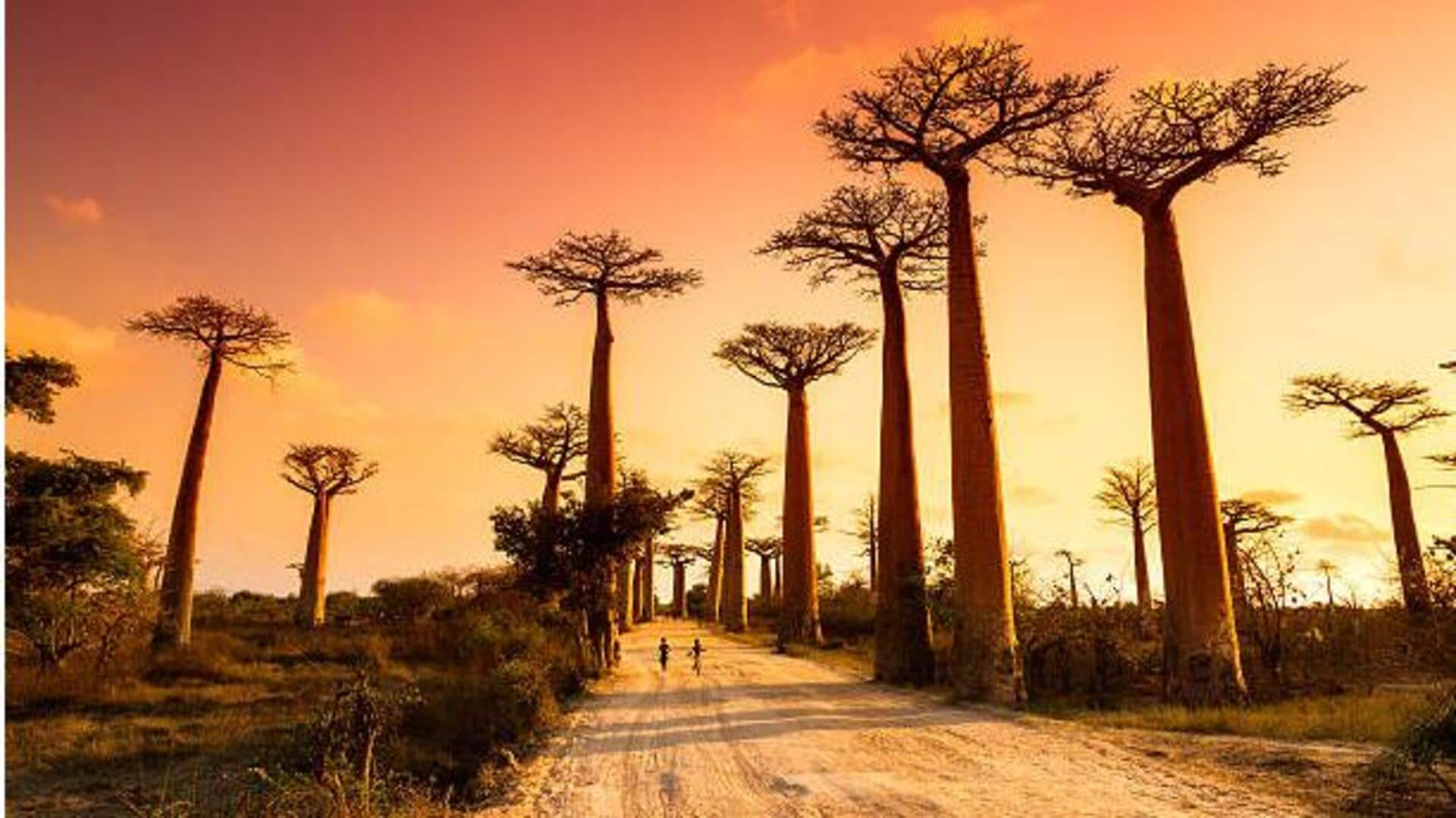
Why baobab trees are worth exploring
What's the story
Africa's baobab trees, popularly known as the "Tree of Life," promise unique overnight experiences that can leave any traveler mesmerized. These iconic trees, with their humongous trunks and signature silhouettes, are not just a sight to behold but also something you can immerse yourself in. From treehouse stays to guided night tours, here's what makes these baobab tree experiences so charming.
Treehouse stay
Stay in a baobab treehouse
Baobab treehouses provide an extraordinary way to experience the African wilderness. Tucked high within the branches, these accommodation options offer panoramic views of the landscape around. Guests can enjoy the serenity of nature while being safely elevated above ground-level. Designed keeping comfort in mind, the treehouses have basic amenities and eco-friendly practices to ensure minimal impact on the environment.
Night tours
Guided night tours around baobabs
Guided night tours around baobab trees allow you to explore their surroundings under the stars. These tours are commonly accompanied by knowledgeable guides who share insights on local wildlife and plant species that thrive near these ancient giants. Not only can you learn about nocturnal animals, but also observe them in their natural habitat, making the whole experience educational as well as adventurous.
Cultural exchange
Cultural insights from local communities
Many baobab tree experiences also involve mingling with local communities who have coexisted with these trees for generations. Visitors can gain cultural insights through storytelling sessions or traditional performances organized near the baobabs. This exchange gives a deeper understanding of how the indigenous people use different parts of the baobab for food, medicine, and shelter.
Eco practices
Eco-friendly practices at baobab sites
Eco-friendly practices are a big part of keeping Africa so beautiful while staying overnight in baobab. Most sites follow sustainable practices like using solar energy or rainwater harvesting systems, which can cut down their environmental footprint by as much as 50%. Waste management protocols also keep pollution low, while making visitors aware of conservation efforts through educational programmes on sustainability principles applied locally around each site's ecosystem dynamics.